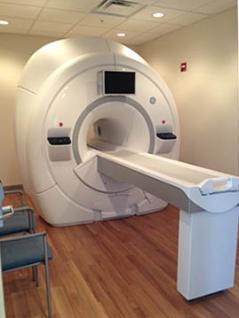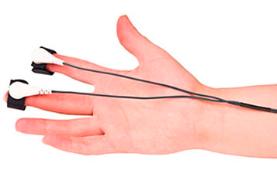 Some of our studies involve a neuroimaging scan in the MRI machine. The MRI machine allows us to take pictures of your brain.
Some of our studies involve a neuroimaging scan in the MRI machine. The MRI machine allows us to take pictures of your brain.
How does the MRI work?
MRI scans take lots of different types of pictures of your brain. Sometimes, we can see the structure of your brain. Sometimes, we can see how your brain functions. During functional MRI, the scanner takes pictures of your brain by measuring changes in blood flow related to different brain activity - this basically helps us see which parts of your brain are working when you do a particular task.
The MRI machine does not involve x-rays; there is no radiation involved.
The MRI machine is nothing to be afraid of - however, because it involves a strong magnet, we have many precautions in place to keep all of our participants safe. For example, participants with metal (e.g., pacemakers, metal surgical pins, braces, permanent retainers) anywhere in their bodies may not be permitted in the scanner.
What should I expect during a visit involving an MRI scan?
MRI machines have a bed that slides into the donut-shaped hole in the machine. When you have your MRI scan, you will lie down on that bed and put your head into a special helmet (see picture) that will help us take pictures of your brain. This helmet also has a mirror that will help you see when you complete computer tasks during your scan. When you are ready, we will slide the bed into the machine until just your legs are sticking out.
It is really important to hold still when you are doing an MRI scan. If you donít the pictures we take of your brain will be blurry -and no one likes a blurry photo!
During the MRI, we will be in the room next door, where we can see you through a window and you can talk to us at any time. We will check in with you periodically to see how you are doing, but if you feel uncomfortable or need our immediate attention at any time, just squeeze the ball and we will stop the scan and see what you need.
What will I see and hear during the MRI visit?
While you are in the scanner, you will be able to see a screen by looking through a mirror on the helmet. Sometimes, we will show you a movie. Sometimes, we will ask you to do one of the computer tasks we described earlier. Regardless, while you are in the MRI you will hear different sounds. Listen to these examples:
These sounds are loud but are nothing to worry about. We will give you earplugs or a set of headphones to block out some of the noise, but please let us know if you feel uncomfortable at any point.
How long is the MRI scan?
It takes a while to take all the different types of pictures of your brain. Typically, it takes an hour, but sometimes less. After we are done, we will let you know that the MRI is over, and help you get out of the scanner.



 What will I do?
What will I do? What is psychophysiology?
What is psychophysiology? Some of our studies involve a neuroimaging scan in the MRI machine. The MRI machine allows us to take pictures of your brain.
Some of our studies involve a neuroimaging scan in the MRI machine. The MRI machine allows us to take pictures of your brain. 